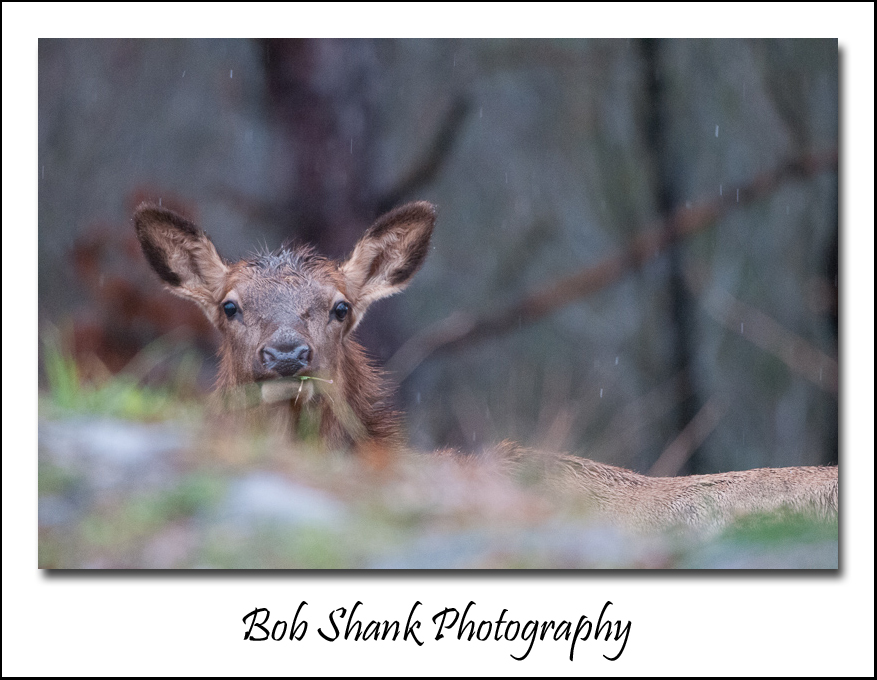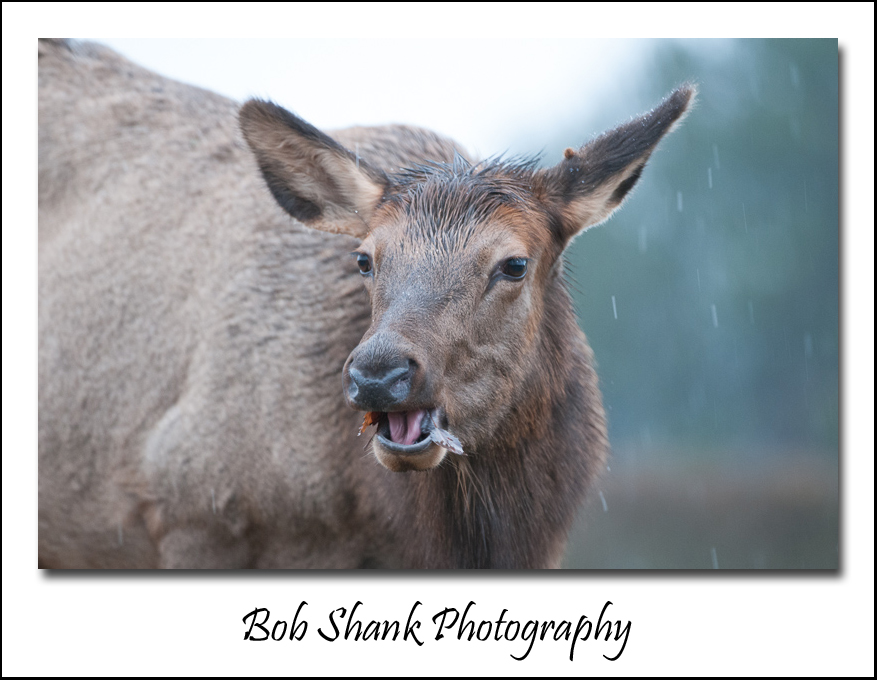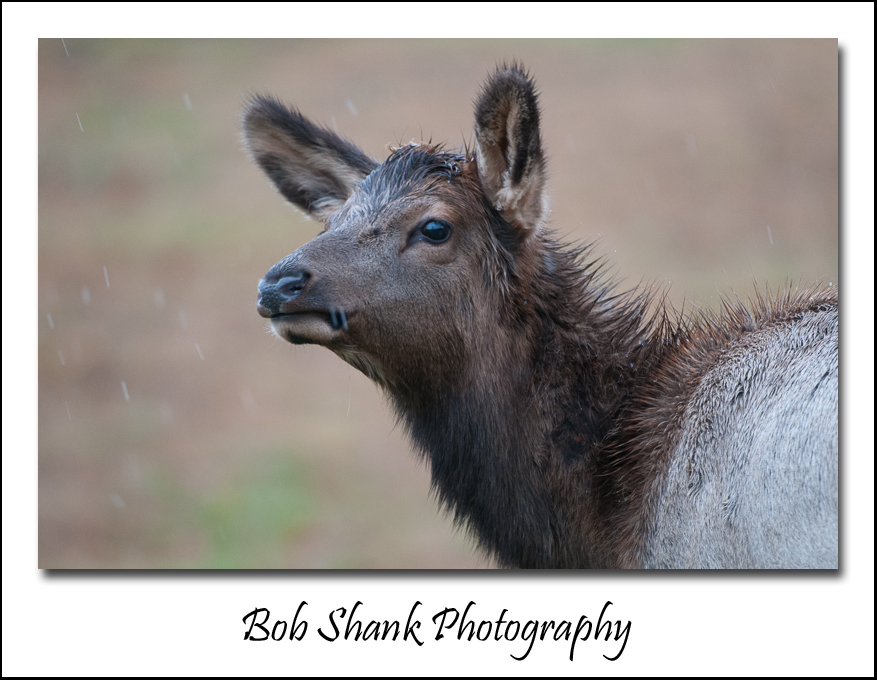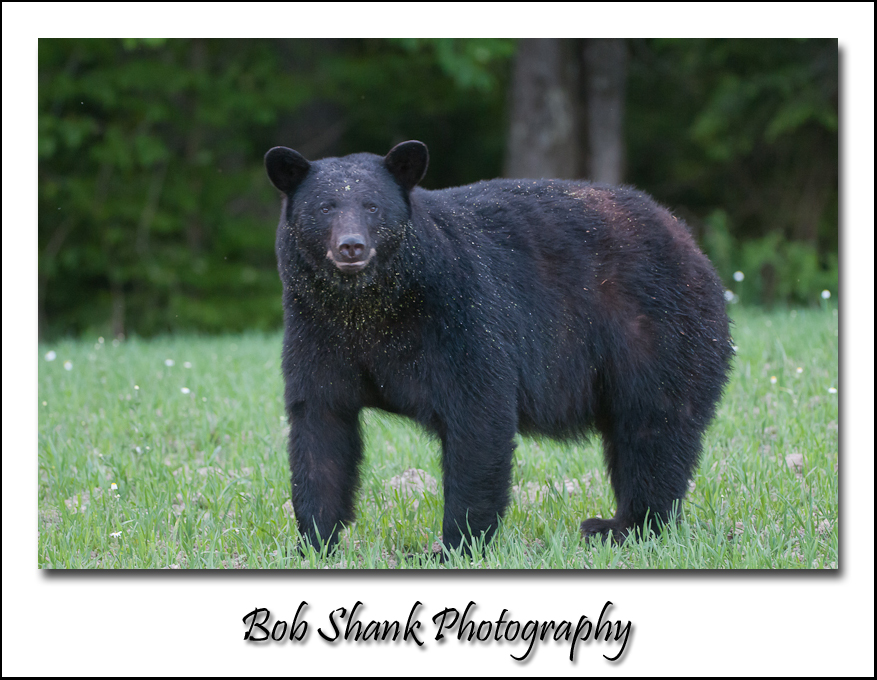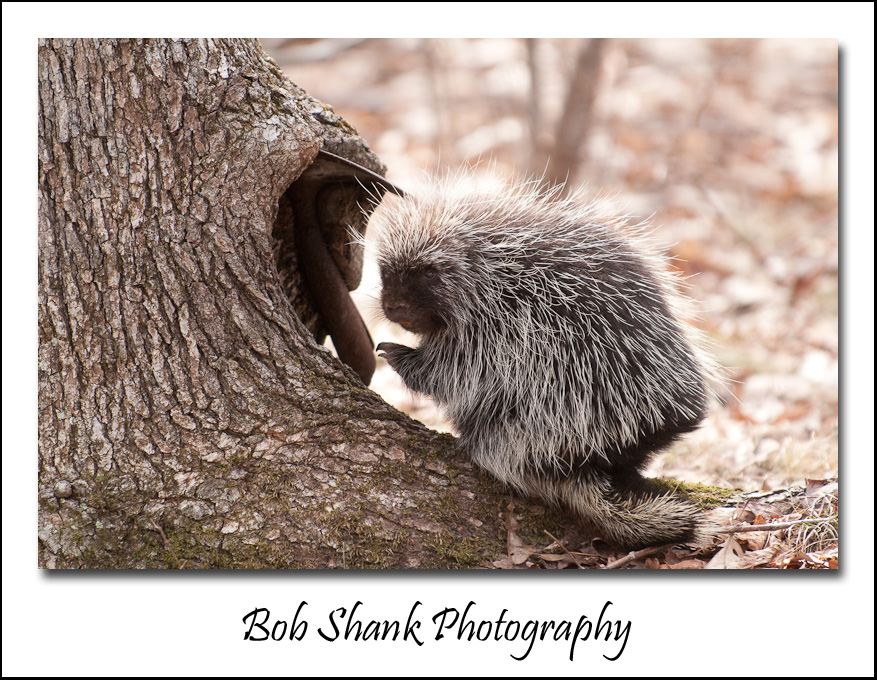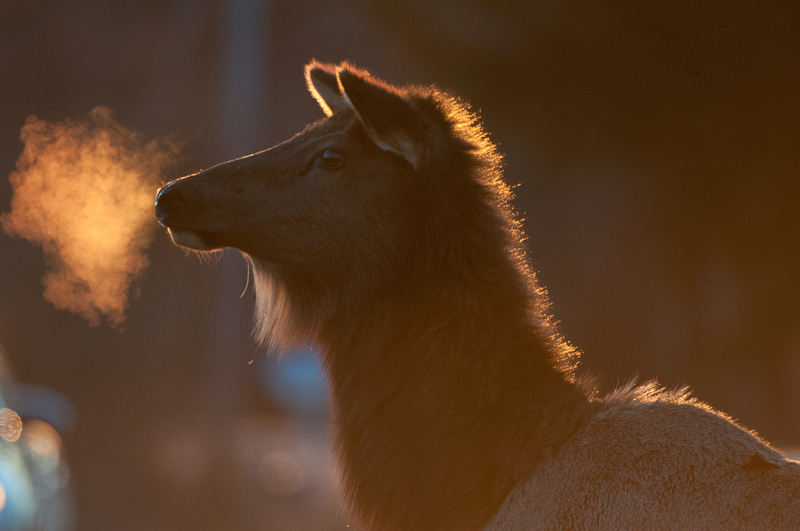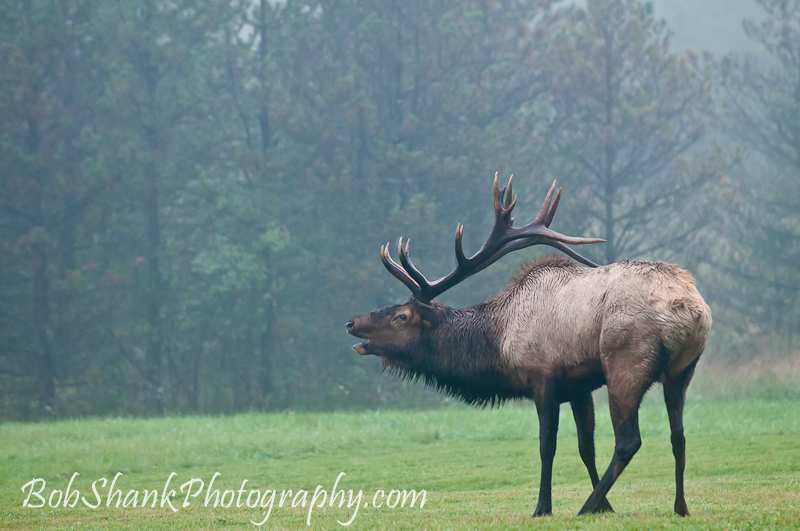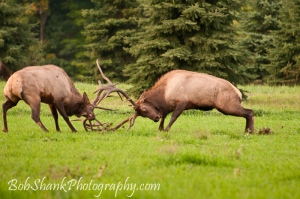
So the elk were on full alert and now I was, too!
A black bear was coming my way–directly toward me!
Call me stupid, but I thought it was pretty neat that this bear was walking straight toward me. I remember another day when I had Lydia and James with me in my favorite field near our camp. We were enjoying my most favorite spot when a black bear came out of the woods below us and was headed straight in our direction. Little Lydia looked at me and asked, “Daddy, shouldn’t we be afraid?” “No,” I replied, “black bears are more scared of us than we are of them.” About that time a four-wheeler came up the dirt road, illegally I might add, and scared off the bear and that was that.
This time, I was alone in the middle of a field, with a black bear coming straight toward me but much, much closer! Still, I thought it was cool. After all, isn’t this a wildlife photographer’s dream come true to see and photograph a black bear in the wild up close like this? I even talked to the bear, as I do with most of the wildlife I photograph. I wasn’t sure it heard me though because it kept coming in my direction.

Just look at those claws! This was most certainly a dream come true for me. I’ve seen several black bears in my day and even photographed one fairly close before. But that one had an ear tag and was on a dumpster, literally. That will be a story for another blog post on another day. This bear was just coming through the field and it appeared to have already ravaged a tree or something with the telltale signs of white tree splinters all over its fur and even on its head. This bear simply seemed to be out for an evening stroll. However, he was coming closer and closer and straight at me!
Then it turned broadside to me and I thought okay, this is good. I’ll keep clicking off photographs of this special encounter. Just look at this bear, I thought to myself. It’s beautiful!
On another evening in this same field, my son, James, and I saw a sow and three little cubs. That was quite a sight and an awesome father/son moment, too!
Then all of a sudden I noticed my flash card was full. So I had to make the switch to put in a new, fresh card. I’ve done this countless times before and it’s really no big deal. Even with a black bear standing in the field with me, I was reloading pretty calmly when the bear started coming toward me again–closer and closer! Now, I will readily admit, my heart began to beat a little faster and my mind went into full gear. I suddenly realized that at this distance and my with my location in the middle of that field, I was a sitting duck with no escape plan! Dumb! Would this now be a fatal mistake?
This was now turning into a serious dilemma so I did what any seasoned wildlife photography would do–I yelled! Yep, I yelled, not quite at the top of my lungs but loud enough that this time the bear heard me. I think I scared the bear at least as half as much as I was scared, and it turned around on a dime and began to run back in the direction it came.
The bear trotted off directly away from me and I kept clicking photos. It was a beautiful and amazing sight. It then turned to follow the edge of the field and was headed in a direction where I figured it was going to cross the road ahead of me. So I quickly moved down the road to get into a better position to click a few more photos. By now my fear had subsided and I knew I was safe. The bear was just about to cross the road when it looked back at me as if to say, “Goodbye.”
Then the bear trotted across the road.
Just look at those rear paw pads. Aren’t they beautiful?
The show wasn’t over yet. Not at all. The bear then went to a tree, seemed to study it carefully and then looked in my direction again.
Then it stood up on its hind legs and rubbed its back against the tree. I think it was indicating in no uncertain terms that this was his territory and not mine! I just wish I was on the other side of that tree to see his face when he did this!
Then he trotted off into the woods to cross the stream below. The elk were looking on, a bit more relaxed now, but still attentively.
And with that, the amazing encounter was over. Wow! What an incredible experience!
In hindsight, I believe I did the right thing when I yelled at the bear in the moment I was exchanging the flash card in my camera. I didn’t want the bear to stumble right up on me and be completely surprised or things could have gotten much more serious. Also, please note that I had a 200-400mm lens on my camera and I was maxed out most of the time at 400mm during this encounter. I in no way want to encourage any of you readers to try to get so close to a wild animal. Having and using the right equipment is a must for wildlife photography. As a matter of fact, I saved up for 3 1/2 years for this big lens and it is paying off in tremendous ways already. I would never have stayed in my position with a shorter lens. My experience with the wild animals of Pennsylvania and the information I learned from studying them, matched with paying close attention to the experiences of others, helped me make mostly good decisions in this encounter. In fact, I might have panicked a little too soon when I yelled because in reality it wasn’t really all that close to me. The zoom lens just makes it look that way. Nevertheless, respect for these wild animals is prudent and must be followed at all times.
I took a few more photos of the elk who remained in the field, but as the light was beginning to wane, I placed the tripod over my shoulder and walked back out of the field with a huge smile on my face. This is what the Pennsylvania Wilds have to offer for those who are patient and lucky enough to experience an amazing encounter like this. I was blessed to see and photograph a Pennsylvania Black Bear! What an amazing encounter in Elk Country Pennsylvania!
